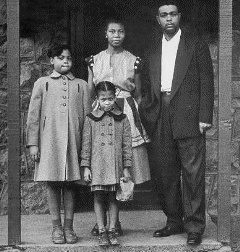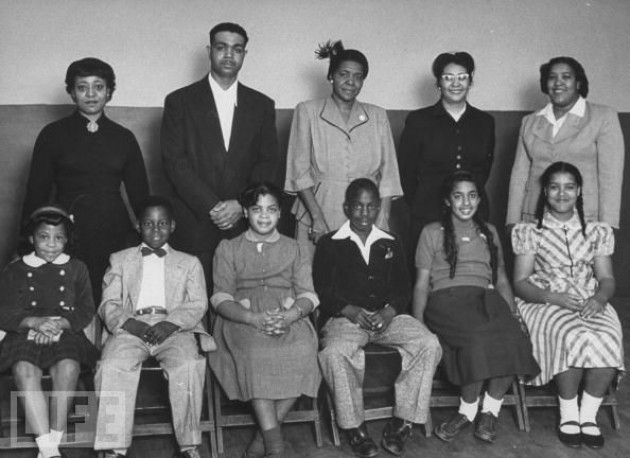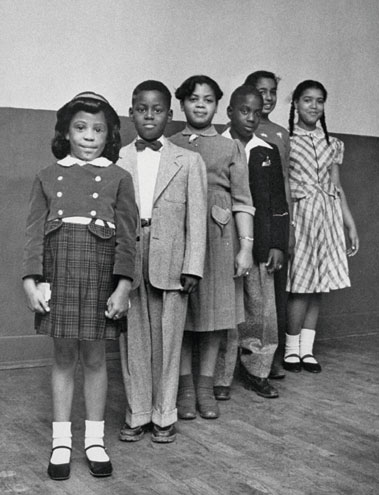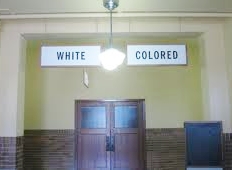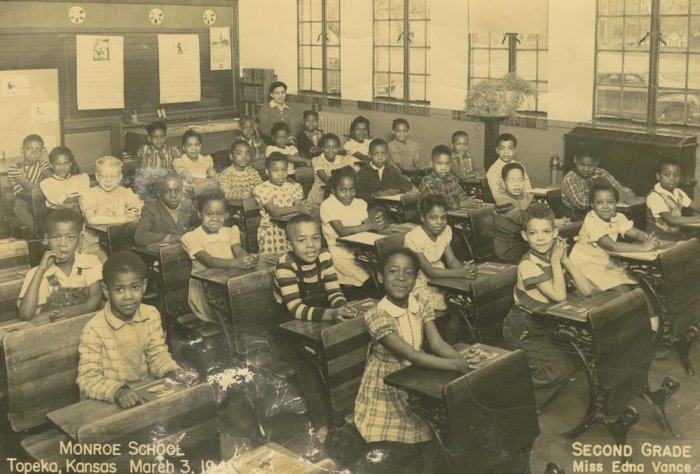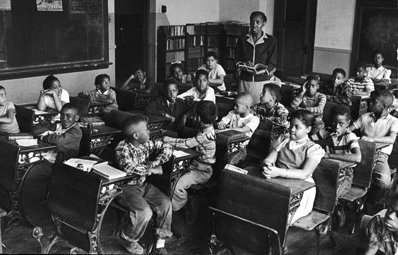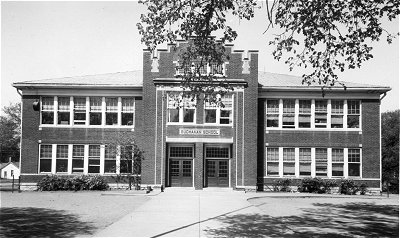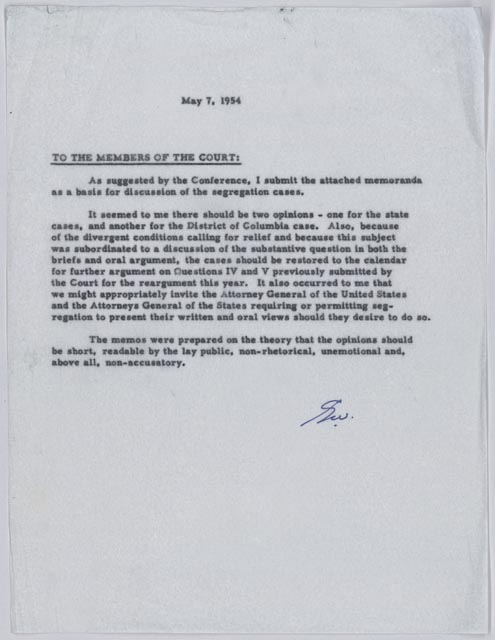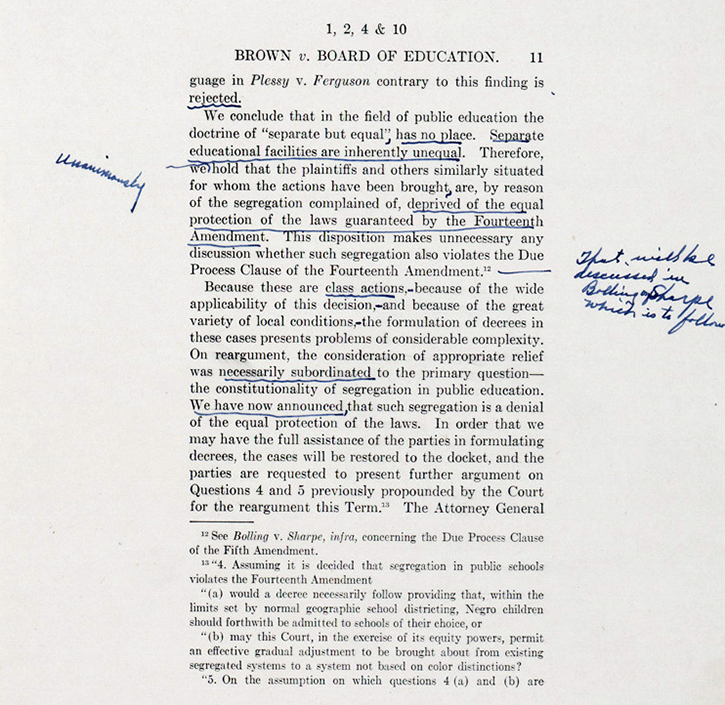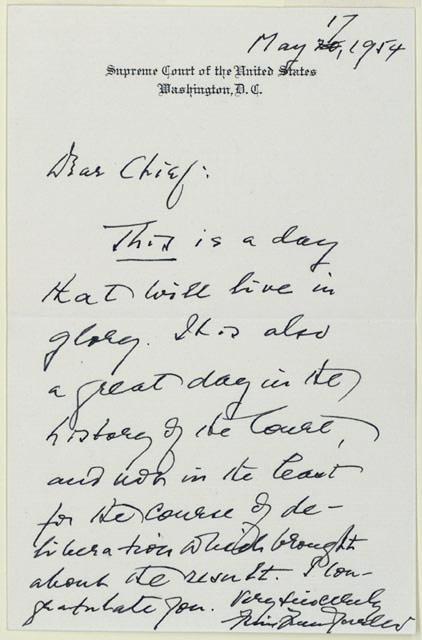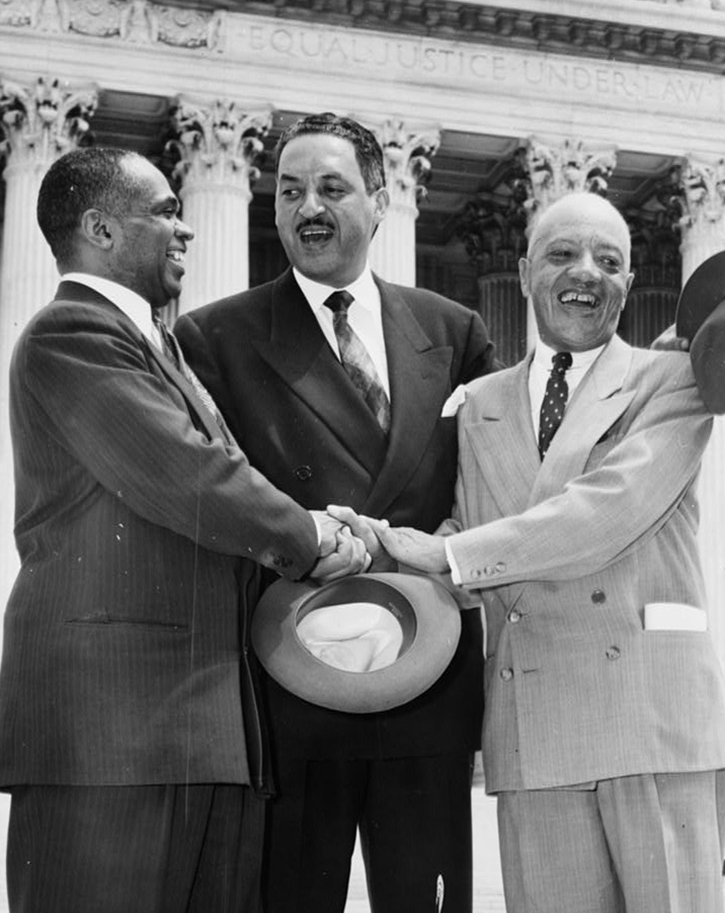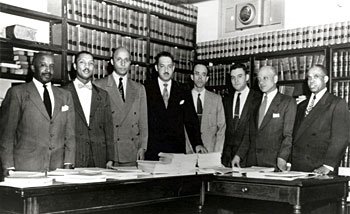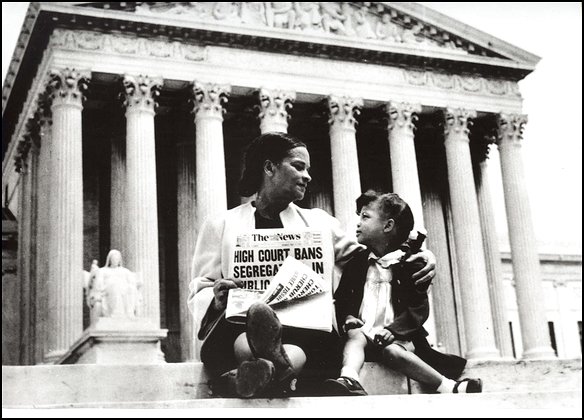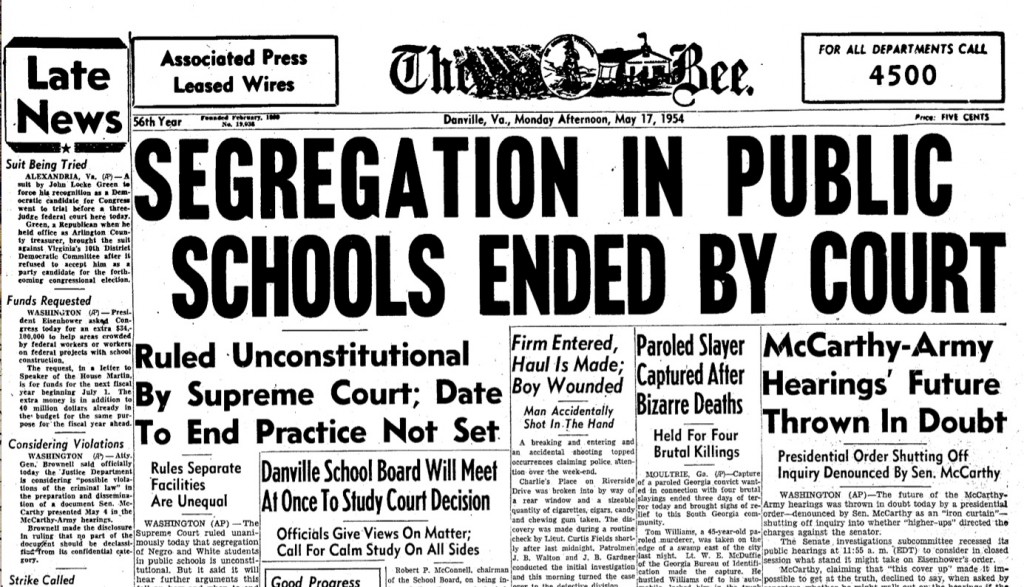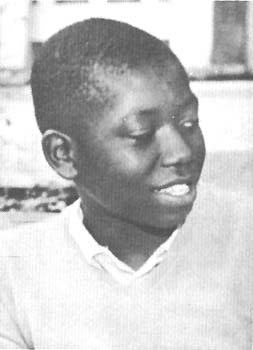This is Linda Brown, the third-grader who challenged the Topeka, KS law requiring her to enroll in a segregate school.
Here is Brown’s family.
(Linda Brown of Topeka (left), with her parents, Leola and Oliver, and younger sister Terry. )
Here are all of the plaintiffs from the various companion cases to Brown v. Board, and their parents.
Front row: Vicki Henderson, Donald Henderson, Linda Brown, James Emanuel, Nancy Todd, Katherine Carper
Back row: Zelma Henderson, Oliver Brown, Sadie Emanuel, Lucinda Todd, Lena Carper.
Here is an other photograph of all of the students.
This is Monroe Elementary School at issue in Brown v. Topeka Board of Education. Linda Brown, third grade, was forced to enroll in this all-black school. It was 21 blocks from where she lived.
Here are photographs from inside Monroe Elementary.
The white-Sumner Elementary School was much closer to where Linda lived.
The path to the Supreme Court’s decision in Brown was long and arduous, and quite complicated.
Here is a memo from Chief Justice Warren, dated May 7, 1954, querying whether it would be appropriate to have the state Attorneys General provide argument on the case as well.
Here is the oral argument sheet from decision day.
Here is Chief Justice Warren’s draft of the final opinion.
Here is a memo Justice Felix Frankfurter wrote to Chief Justice Earl Warren on decision day. It reads:
This is a day that will live in glory. It is also a great day in the history of the Court, and not in the least for the course of deliberation which brought about the results. I congratulate you. Felix Frankfurter.”
This iconic photograph is of George E.C. Hayes, Thurgood Marshall, and James Nabrit congratulating each other afther the Court announced the decision in Brown, on may 17, 1954.
Here is the entire NAACP Legal Defense Fund legal team:
Another iconic photograph of Linda Brown sitting on the Courthouse steps, with a newspaper blaring the headline,”High Court bans Segregation.”
This newspaper headline, however, belies the greatest limitation of Brown. Desegregation was only ordered with “All deliberate speed.”
Bolling v. Sharpe
This is Spottswood Thomas Bolling, Jr., twelve years old. He was not allowed to attend a new junior high school in Washington, D.C. reserved for for whites.

